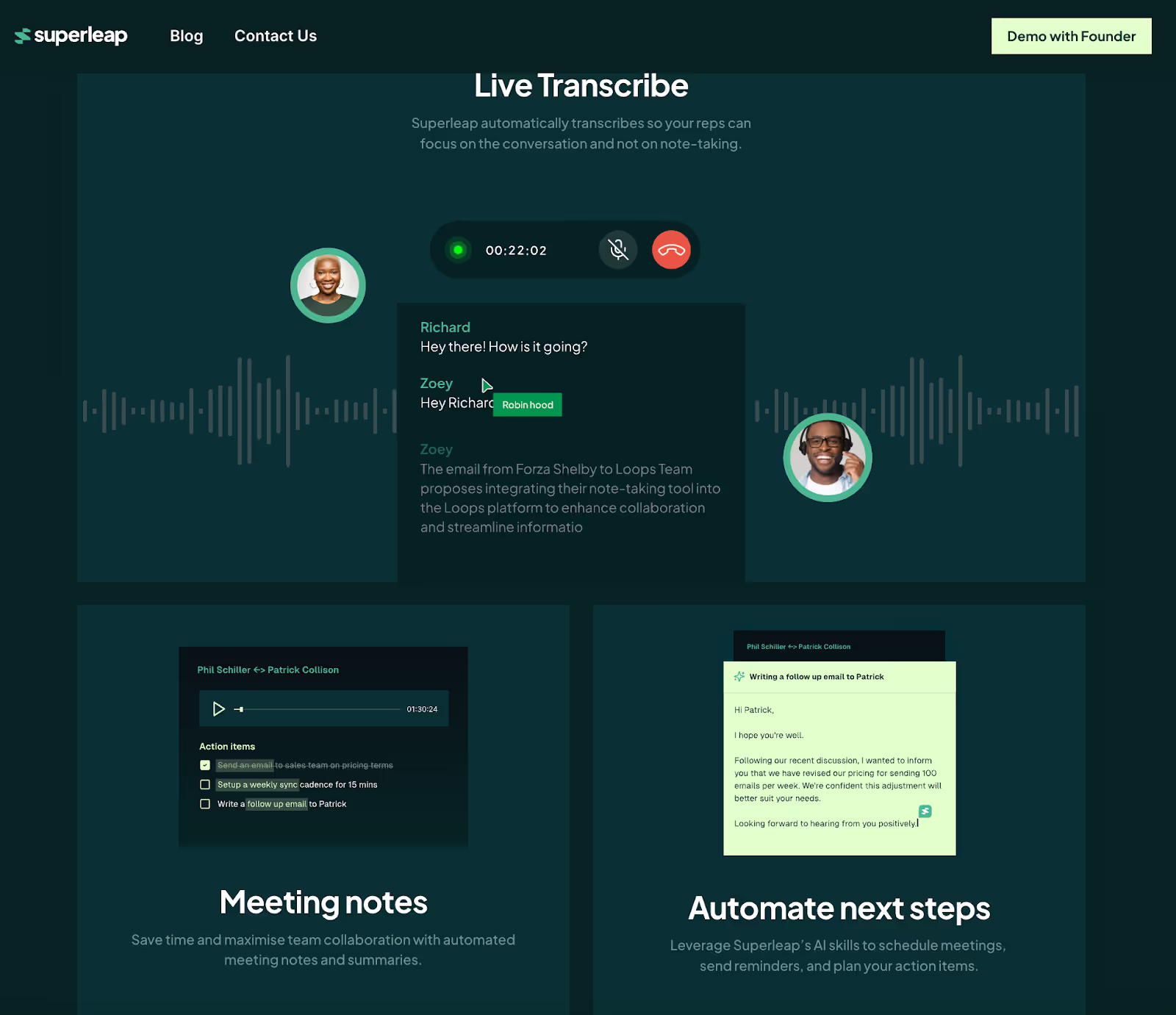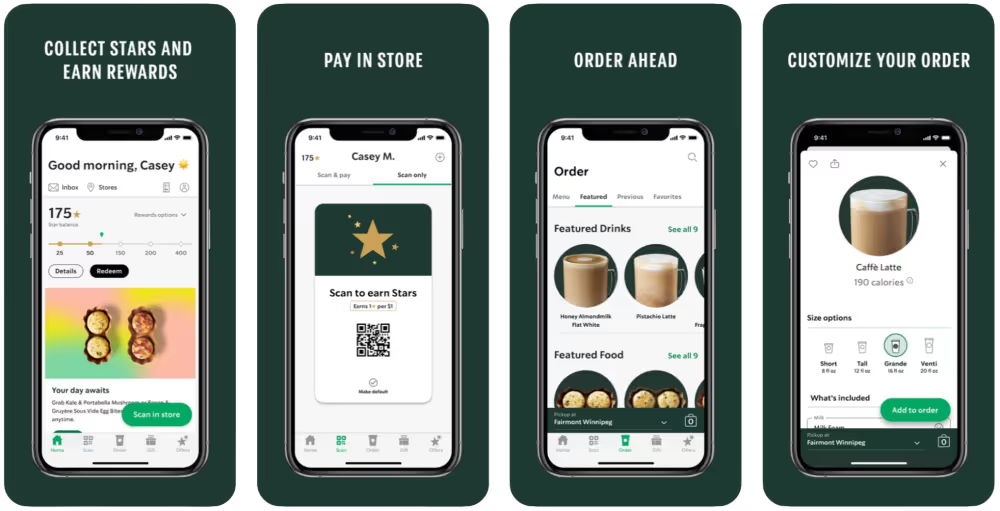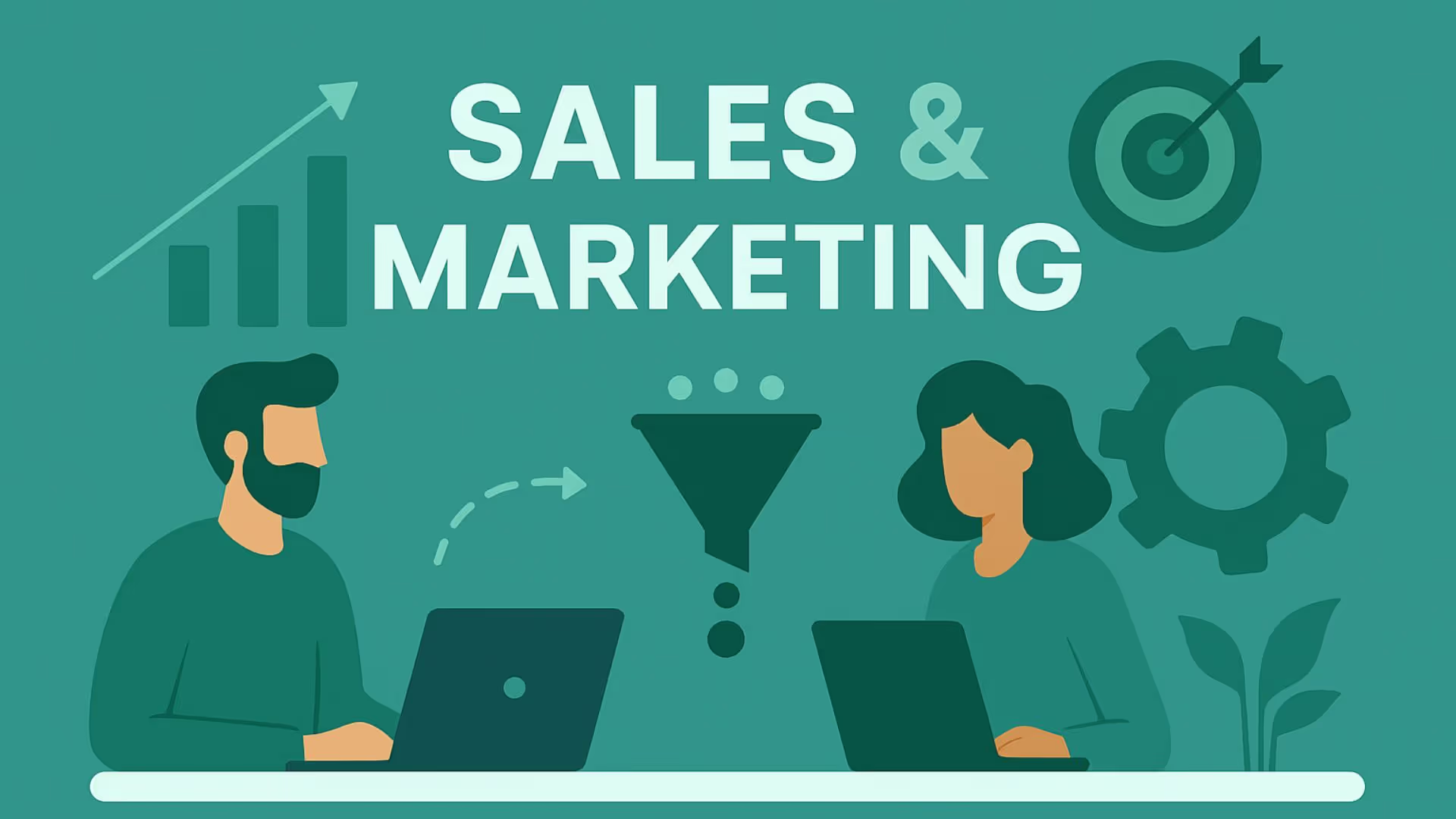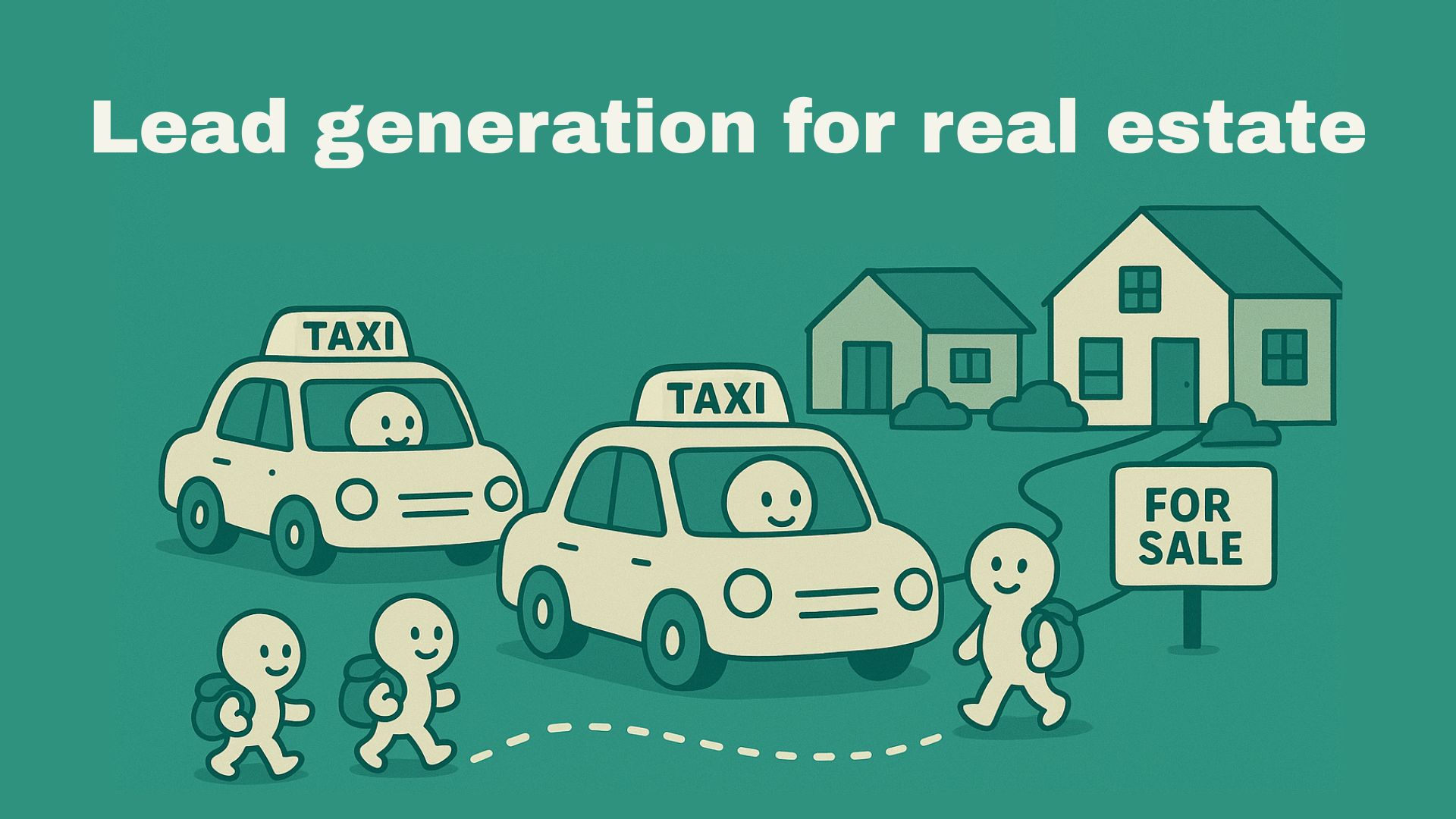

Let’s clear the air. For everyone who uses sales and marketing interchangeably, this blog post is for you.
Understanding sales & marketing department
Sales and marketing work together to generate revenue for the business. While their goal is the same, the approaches they adopt differ.
The marketing department studies trends, understands the target audience, works on building a brand persona and comes up with strategies to attract inbound customers. Sales takes over from there to convert these inbound requests into paying customers.
To be more clear on their functions, here’s a detailed table for you.
Key functions of sales & marketing
Now that we have a clear view on specific functions, let’s move on to learn their specific roles in organization.
Organizational structure of the sales and marketing department
When it comes to structuring your sales and marketing department, keep in mind your company size and industry size.
Let’s start with a startup (0-50 employees).
The business is at an early phase and still growing. Focus on keeping your team small and lean. Focus more on spreading brand awareness, generating leads and early customer acquisition.
Your structure can look something like this:
Moving on to mid-level companies (50-300 employees).
The business is in the growing phase. Focus more on demand generation, conversion optimization, and pipeline management.
This is the time to refine the buyer journey. Start using automation tools and CRMs. Split your inbound (marketing-led) and outbound (sales-led) efforts.
Since reporting lines are clearer, your structure can look something like this:
Let’s address the big one, enterprise sales (300+ employees).
The business is generating steady revenue and teams are multi-layered. The focus at this stage is on brand dominance, market share growth, revenue maximization.
Your priorities should start including integrating tools like Superleap CRM and Marketo for automation, using advanced predictive analysis and AI in your sales process, and implementing account based marketing (ABM) for high-value accounts.
The structure is vast and organized. Here’s what it generally looks like:
🤔 When to focus more on sales or marketing?
Marketing focus: If you’re building a DTC brand, or you’re entering industries like consumer goods, fashion, FMCG, e-commerce, ed-tech, and electronics.
Sales focus: If you’re offering B2B services, enterprise software, consulting, handling complex deals like SaaS, or you’re in industries like automotive and real estate.
Whatever stage your company is in, check what drives growth and brings in revenue. If it is inbound (content, SEO, social, PPC), spend more resources there and vice-versa.
Tools and technologies that power sales & marketing
CRMs: Superleap
Our CRM will help you manage & score leads, track sales pipeline, automate repetitive tasks like scheduling meetings, taking notes, and sending reminders.
You can also access ROI data for campaigns, build your own report with AI insights, study voice analytics to spot early bottlenecks, and provide performance analytics at both an individual and team level.

Marketing Automation: Mailchimp, Marketo, ActiveCampaign
You can easily automate newsletters, emails, promotional offers, and ad campaigns. If you’re a D2C brand, activities like scheduling and posting on social media also become effortless with Mailchimp.

If you’re into B2B or SaaS, automating helps identify & score leads basis their engagement so you can focus more on clients who show top interest using Marketo.
Social Selling: LinkedIn Sales Navigator, Twitter/X tools
Both teams can leverage social media to reach out to prospects, engage with them, and follow their achievements as an effort to increase brand visibility and partnership.
Analytics: Google Analytics, Tableau, Mixpanel
Data is everything. Marketing teams can track website traffic, user behaviour, engagement, and campaign performance using Google Analytics, to see what areas are doing well and where intervention is required.

By creating dashboards using tableau, your sales team can derive insights on complex datasets.
Mixpanel leans towards product and user analytics, excellent for SaaS industries to measure engagement, retention and conversions.
AI Tools: ChatGPT for content, Drift for chatbots, Gong
ChatGPT is godly. Take advantage of this tool for content creation, email drafting, and even brainstorming pitches or marketing ideas.
Drift is an AI chatbot, best used to answer customer queries and schedule meetings in real-time so you don’t miss out on interested leads.
Sales teams can employ Gong for call analysis to receive feedback on talk ratio, objections, deal risks and figure coaching opportunities from it.
Strategic importance of sales & marketing
Revenue generation
Both sales and marketing departments are the frontline of business income streams. Marketing generates leads by running campaigns & podcasts, writing SEO content and email marketing.
Sales team, pick on these leads, contact them, propose value, build a relationship, and convert them into paying customers.
They collaborate by sharing data to ensure efficiency in moving the leads through the sales funnel.
Apple’s sales and marketing are legendary. They manage to generate a massive revenue during product launches.
Let’s take the iPhone 14 launch. This contributed to Apple’s revenue with the company reporting over $394 billion in sales in 2022, most of which came from iPhone sales. In 2009, iPhone sales contributed to 25% of their revenue, which has shot up to 55% as of 2025.
Their strategy combines hype-building (through events like WWDC) and direct sales, ensuring consistent revenue growth.
Market positioning and competitive edge
In competitive markets, having a strong brand identity and unique value proposition is critical. Marketing conducts market research, studies different trends, and shapes how the brand is perceived. They establish who it is for, and what makes it different from competitors.
Sales, strategically, uses this information during conversations to persuade customers.
Tesla positioned itself not just as a car company but a tech and sustainability brand. Through bold marketing and Elon Musk’s personal brand, they created a premium and innovative image - making it stand out from traditional automakers.
Tesla also differentiates itself by not spending on traditional advertising, relying instead on its superior product design and a cult-like following.
Result: Tesla is the most valuable car manufacturer globally, with a market cap of over $900 billion (as of 2025), outpacing traditional automotive giants, according to Statista.
Alignment with business goals
Sales and marketing departments must always be aligned with business goals, whether it is growth, supporting product launches, geographic expansion, customer satisfaction and strategic initiatives. Without alignment, efforts can become disjointed, wasting resources.
Coca-Cola’s “Share a Coke” campaign aligned perfectly with its goal of personalizing the brand and increasing engagement. They perfectly replaced their logo with popular names on bottles, encouraging customers to find and share their names (or friends’ names) on social media.
Result: The campaign generated a 7% increase in sales in Australia among young adults. and ran successfully across 80 countries.

Driving business resilience
Both teams are crucial during times of crisis, downturns, or shifts in customer behavior to help the business pivot and maintain cash flow.
Starbucks demonstrated remarkable resilience during the pandemic by expanding its mobile ordering and contactless payment options through its app, making it easier for customers to order ahead and pick up their drinks safely.
The company also introduced curbside pickup and enhanced its drive-thru services to accommodate social distancing.
Starbucks Rewards, its loyalty program, became central to its strategy, with 90-day active members growing by 10% in 2020.
Despite temporary store closures, Starbucks hit a record revenue of about $29 billion in 2021, driven by its focus on digital engagement, customer safety, and operational flexibility.

The future of sales & marketing
AI and Predictive Analytics in targeting
AI and predictive analytics enable businesses to anticipate customer needs, predict buying behavior, and optimize outreach strategies by analysing massive datasets in real-time.
It helps you score leads based on their likelihood to convert and AI tools intimate the best time to contact a lead. Your algorithm can then learn from these interactions to recommend products or offers.
Amazon uses AI to suggest products based on the user’s browsing history, and previous purchases increasing conversion rate and average order value (AOV).

Account-Based Marketing (ABM) and buyer intent data
ABM targets high-value clients with tailored messaging and experiences. Buyer intent data helps identify when those accounts are in-market for a solution.
How this works is, both teams collaborate on key accounts. Tools like 6sense, Demandbase, or ZoomInfo track signals like website visits or content downloads to surface intent.
Then, customized campaigns are created to attract the decision makers in those companies.
Rise of RevOps (Revenue Operations) for integration
RevOps integrates sales, marketing and customer success operations to centralize data, tools, and processes across departments. This ensures alignment on metrics, goals and automation as well.
This is directed towards reducing any inefficiencies between the teams and all of them are aligned with one business goal.
Snowflake, the cloud data platform, uses RevOps to align all go-to-market functions - resulting in improved forecasting, tighter pipeline management, and better customer retention.
Sustainability and ethical branding become key drivers.
In conclusion, while sales and marketing have distinct functions, they’re the strongest when they collaborate. If you are heading a business or are a manager, ensure both these teams are aligned to drive growth and achieve lasting success.
Heading text
Nunc sed faucibus bibendum feugiat sed interdum. Ipsum egestas condimentum mi massa. In tincidunt pharetra consectetur sed duis facilisis metus. Etiam egestas in nec sed et. Quis lobortis at sit dictum eget nibh tortor commodo cursus.
Odio felis sagittis, morbi feugiat tortor vitae feugiat fusce aliquet. Nam elementum urna nisi aliquet erat dolor enim. Ornare id morbi eget ipsum. Aliquam senectus neque ut id eget consectetur dictum. Donec posuere pharetra odio consequat scelerisque et, nunc tortor.
Nulla adipiscing erat a erat. Condimentum lorem posuere gravida enim posuere cursus diam.
.svg)






